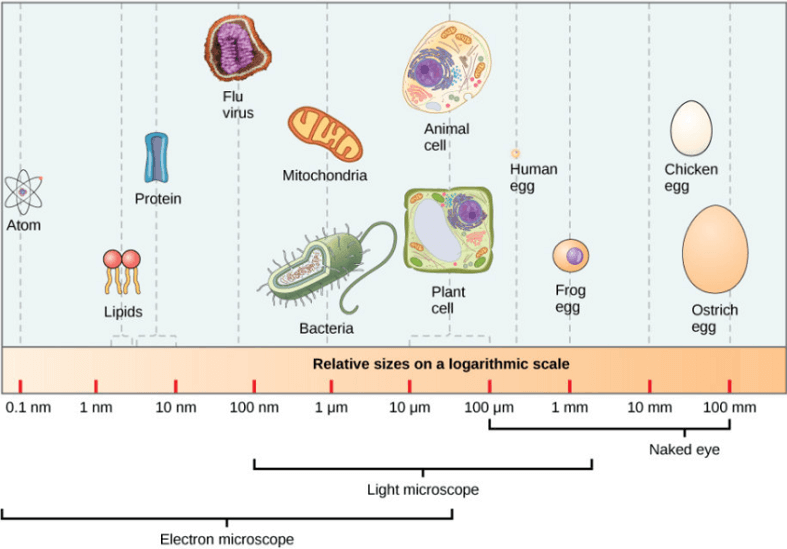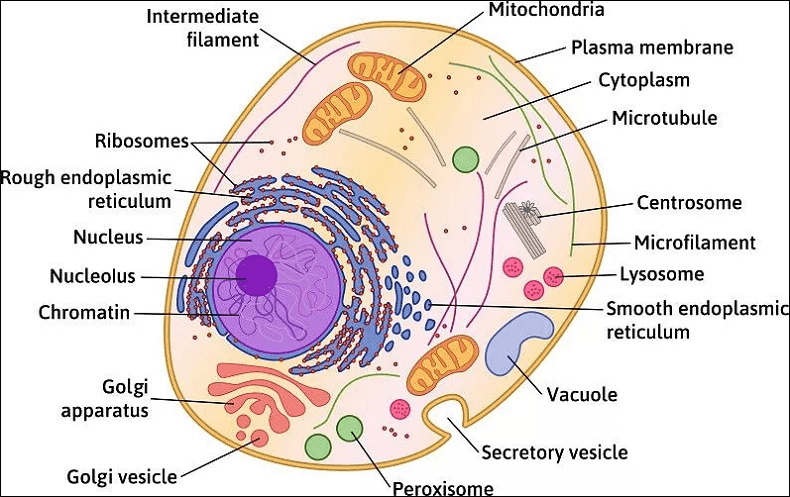Are Animal Cells are EukaryoticAll the cells fall under the two broad categories known as eukaryotic cell and prokaryotic cell, whether they are Bacteria, Archaea, or Eukaryote. Before we discuss whether the animal cells are eukaryotic or prokaryotic, it is important to know what are eukaryotic and prokaryotic cells and the key difference between them. What is a Eukaryotic Cell?The term eukaryotic is also known as "true nucleus" (eu = true, karyotic = nucleus) or "true kernel" because of the presence of a true nucleus in it. A eukaryotic cell has a membrane-bound nucleus and other components, including the plasma membrane, ribosomes, Golgi apparatus, chloroplast, mitochondria, cytoplasm and several rod-shaped chromosomes. It also combines with membrane-bound compartments or sacs called "organelles" (means "little organ"), which has specialized cellular functions (helps in reproduce and survival), similar to organs of our body have special functions. What is a Prokaryotic Cell?The term prokaryotic refers to "false nucleus" (pro = false, karyotic = nucleus) or "before nucleus". A prokaryotic cell is a single-celled, also called a unicellular organism, which doesn't contain a nucleus and other membrane-bound components. This cell is a bit different from the eukaryotes cell. Its DNA is found at the center of the cell, called a nucleoid. Most prokaryotes (bacteria) have a cell wall of peptidoglycan made with amino acids and sugars, and many have polysaccharide capsule. The cell wall gives an extra layer of protection that maintains the cell's shape and prevents dehydration. The capsule of the prokaryotic cell makes it attach to the surface of its surrounding. Some of these cells have pili, flagella, or fimbriae. Most pili are used to exchange genetic material at the time of reproduction, known as conjugation. Flagella are used for movement, and fimbriae are used by the cell to attach to the host cell. Common components of CellsAll the cells have four common components, which are given below:
Animal Cell DefinitionAnimal cells are surrounded by a plasma membrane, which is also termed as cell membrane that contains a membrane-bounded nucleus and other organelles. The plasma membrane is a layer that separates the interior of the cell from its outside environment. These cell's features raise the kingdom of Animalia. Animal cells dose not have a cell wall as plant and fungi cell contains. Most animal and plant cells range in size between 1 to 100 micrometers, unicellular between 0.1 to 5.0 micrometers, and they are only visible via microscope. 
Animals are multicellular and diploid. Multicellular means multiple cells combine to form a complete organism. The term diploid cell means: the chromosomes of animal cells are present in homologous pairs. In the period of sexual reproduction, the cellular division process called meiosis is essential to produce the haploid daughter cells or gametes. When two haploid cells get fuse together, they form a diploid zygote, it gets divides, multiplies and from a new organism like complex humans. Animal Cell StructureAnimal cells are mostly smaller as compare to plant cells, and they are irregular in shape due to the lack of a cell wall. A typical animal cell structure is given below, which comprises several components. 
Plasma Membrane (Cell Membrane): It is a semipermeable layer of fats and protein that surrounds the cell. The primary role of the cell membrane is to protect the cell from its surrounding environment. In addition, it is also responsible for the entry and exit of nutrients and another micro bacillus into the cell. Nucleus: It is an organ that contains many other sub-organelles such as nucleolus, nucleosomes, and chromatin. DNA and other genetic materials are also found in the nucleus. Nuclear Membrane: It is a double-layer structure that covers a nucleus and is also called a nuclear envelope. Golgi Apparatus: It is a flat, smooth, sac-like organelle that manufacture, sorts and packs proteins as the transfer particles entire the cell. Golgi apparatus is located near the nucleus of a cell. Lysosome (Cell Vesicles): Lysosomes are round organelles surrounded by a membrane that contains digestive enzymes and helps in digestion, removes waste products, breaks down toxic compounds, excretes, and recycles cell structures. Endoplasmic Reticulum (ER): It is composed of a thin, curved network of the membranous sac and originates from the cellular organelle nucleus. It is found in two different types: "Rough Endoplasmic Reticulum" and "Smooth Endoplasmic Reticulum." Rough Endoplasmic Reticulum continues from the outer layer of nuclear envelops and contains ribosomes. Smooth Endoplasmic Reticulum continuous from the rough endoplasmic reticulum, separate from the nuclear membrane and does not contains ribosomes. Ribosome: They are small organs made of RNA-rich cytoplasmic particles that synthesize proteins. Vacuole: They are organelles bonded to membranes present inside a cell, which are involved in maintaining the size and storage of water, food, waste, etc. Cytoplasm: It is a jelly-like substance that contains entire organelles of cells enclosed within the plasma membrane. The material found within the cytoplasm is called nucleoplasm, contained by a nuclear membrane. Centrosome: It is a small organ found at the nucleus that has a thick center, including radiated tubules. Centrosome founds where the microtubules arise. Mitochondrion: They are double-membrane spherical or rod-shaped organs that generate energy in a cell. They are also called a powerhouse of a cell because they generate energy in the cells. Nucleopore: They are small holes present in the nuclear membrane that helps in the transportation of nucleic acid, proteins and other materials entire the cell. The animal cell is also found in different shapes; it may be flat, oval, spherical, curved, concave or rod-shaped, and rectangle. Most cells are microscopic in shape, and we can only see them via a microscope. Yes, Animal Cells are EukaryoticBased on the above discussion about an animal cell and eukaryotic cell's properties, we can say that the animal cells are eukaryotic. Animal cells are eukaryotic because they have a defined nucleus and other membrane-bound organelles like mitochondria, Golgi apparatus, and endoplasmic reticulum. Other than the membrane-bound nucleus in the eukaryotic cell, these cells also indicate the presence of DNA inside the nucleus. They also include cellular structures, which perform specific functions required for a cell for proper function. The animal kingdom is different from other eukaryotic organisms because most animal tissues combine in an extra-cellular matrix as a triple helix of proteins called collagen. On the other hand, plant and fungal cells combine to form tissues or group by other molecules, such as pectin. Difference between Prokaryotic and Eukaryotic cell
Next TopicGoogle Input Tools
|
 For Videos Join Our Youtube Channel: Join Now
For Videos Join Our Youtube Channel: Join Now
Feedback
- Send your Feedback to [email protected]
Help Others, Please Share









